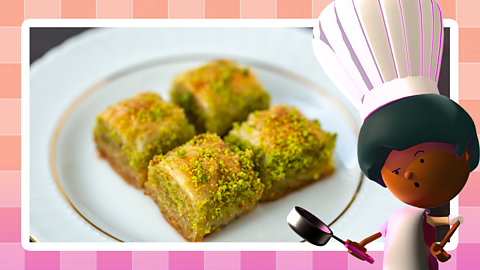Article created in partnership with the .
What are nutrients?
Nutrients are substances found in food that carry out certain jobs in the body.
We need different nutrients to keep us healthy. We get nutrients from foods and drinks.

The different types of nutrients are:
- carbohydrate
- fibre
- protein
- fat
- vitamins
- minerals

What do nutrients do?
Nutrients play an important role in keeping our bodies healthy.
Read on to learn more about which foods contain different nutrients and what they do to keep us healthy.
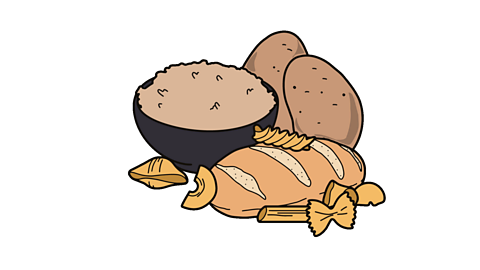
Image caption, Carbohydrate
Carbohydrate is found in foods like potatoes, bread, rice and pasta. Carbohydrate provides energy.
Image caption, Fibre
Fibre is found in foods like wholegrain breakfast cereal, wholemeal bread, brown rice, vegetables, fruit, beans and lentils. Fibre helps to keep the digestive system healthy.
Image caption, Protein
Protein is found in foods like beans, lentils, chickpeas, fish, eggs and meat. Protein can also come from milk, cheese and yoghurt. Protein is needed for the growth and repair of muscles.
Image caption, Fat
We only need a small amount of fat to keep us healthy. There are two main types of fat: unsaturated and saturated fat. Unsaturated fat is healthier for us and it is mostly found in lower fat spreads and oils from plants, such as sunflower oil or olive oil. Saturated fat is found in foods like butter and lard. Fat helps the body to absorb some vitamins.
Image caption, Vitamins
There are lots of different vitamins, such as vitamin A, C, D and E. Different vitamins do different jobs in the body. Vitamin C is found in fruit and vegetables, such as oranges, strawberries, red peppers and broccoli. Vitamin C helps wounds to heal.
Image caption, Minerals
There are lots of different minerals, such as calcium, iron and zinc. Different minerals do different jobs in the body. Calcium can be found in foods like milk, cheese and yoghurt. Calcium can also be found in dairy alternatives, such as soya drinks if they have calcium added. Calcium helps to build strong bones and teeth.
1 of 6
Quiz: Match the nutrient to its job
Can you remember what all the nutrients do? Let's find out!
Amounts of nutrients
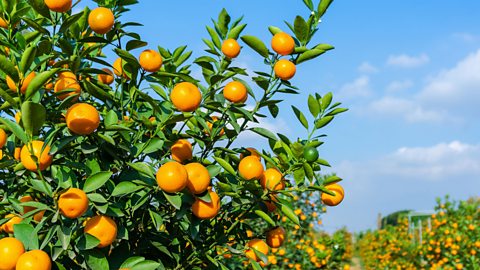
Different types of foods provide nutrients in different amounts. Some foods provide more of certain nutrients than others.
For example, oranges are good at providing vitamin C, so they are called a ÔÇİsourceÔÇÖ of vitamin C.
They also provide 0.8g of protein per 100g.
However, because this is such a small amount compared to other foods, it means that oranges are not called a ÔÇİsourceÔÇÖ of protein.
The table below shows how much of each nutrient can be found in 100g of oranges.

| Nutrient | Oranges per 100g |
|---|---|
| Carbohydrate | 8.2g |
| Fibre | 1.2g |
| Protein | 0.8g |
| Fat | 0.2g |
| Vitamin C (vitamins) | 52mg |
| Calcium (minerals) | 24mg |
Eatwell Guide
We canÔÇÖt get all the nutrients we need from one food. We need to eat a variety of different foods to get all the nutrients we need.
The Eatwell Guide shows us that we need:
- potatoes, bread, rice, pasta and other starchy carbohydrates ÔÇô some starchy food with every meal.
- fruit and vegetables ÔÇô at least five portions a day.
- beans, pulses, fish, eggs, meat and other proteins ÔÇô some protein foods every day.
- dairy and alternatives ÔÇô some foods like milk, cheese and yoghurt every day.
- oils and spreads ÔÇô just a small amount of foods like these.
- about 6-8 drinks a day.
Following the Eatwell Guide can help you to get all the nutrients you need to stay healthy.
Read What is healthy eating? to find out more about the Eatwell Guide.
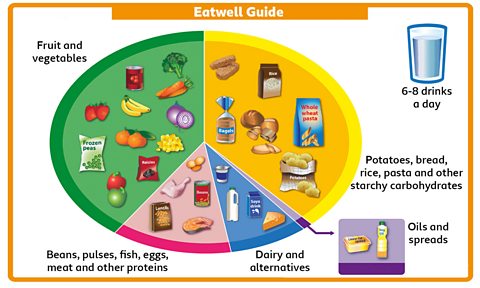
Key words
| Digestive system | The parts of the body that help to break down food so that the body can get energy and nutrients from it. |
| Saturated fat | A type of fat that mostly comes from animals. |
| Unsaturated fat | A type of fat that mostly comes from plants. |
| Dairy alternatives | Foods and drinks that are not made from milk, but contain calcium and sometimes other added vitamins and minerals. They can be used as a substitute for dairy foods like milk and yoghurt. |
Quiz: Know your nutrients
It is time to test your nutrients knowledge with this quiz.
More on Cooking and nutrition
Find out more by working through a topic
- count3 of 13
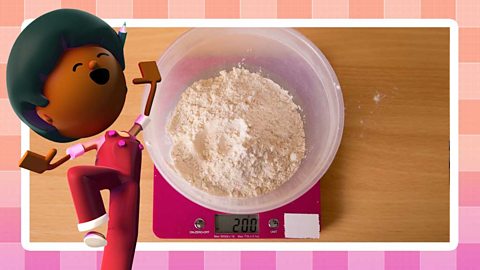
- count4 of 13
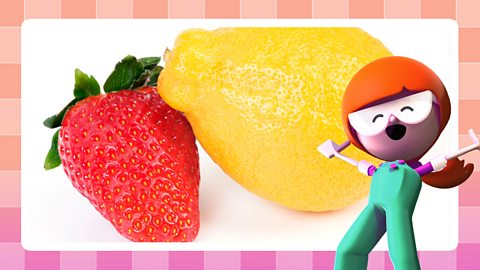
- count5 of 13

- count6 of 13
